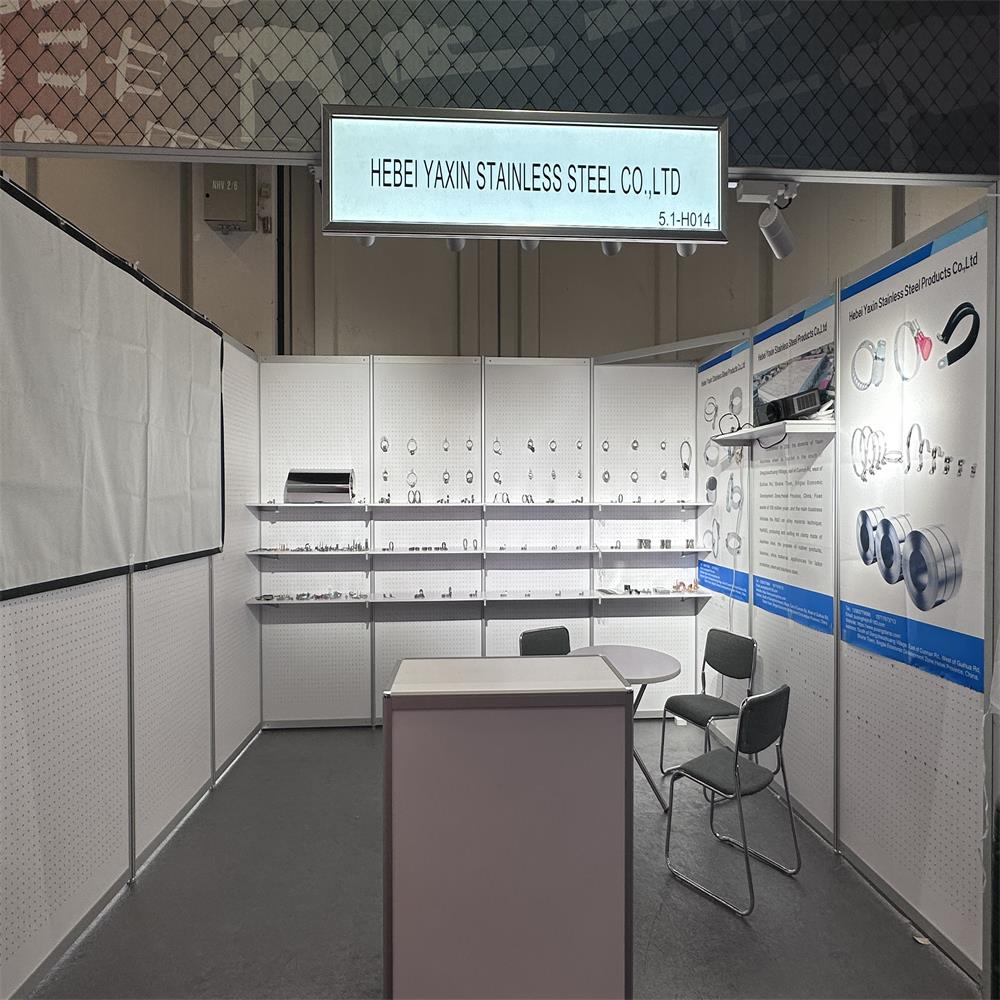- Phone:+86-17331948172 +86-0319-8862898
- E-mail: inquiry@puxingclamp.com
Nov . 14, 2024 18:55 Back to list
heavy duty hose clamps stainless steel factories
Understanding Heavy Duty Hose Clamps A Deep Dive into Stainless Steel Manufacturing
Heavy-duty hose clamps serve as a crucial component in various industries, ensuring that hoses remain secure under pressure. With their ability to withstand high temperatures and corrosive environments, stainless steel hose clamps are particularly favored in numerous applications. This article explores the manufacturing process of these clamps, the importance of material selection, and the factories that specialize in their production.
The Role of Hose Clamps
Hose clamps are used to attach and seal hoses to fittings, preventing leaks and ensuring the efficient operation of fluid transfer systems. Their applications span across sectors including automotive, aviation, pharmaceutical, construction, and agriculture. This wide usage underscores the need for reliable, high-quality components, which is where heavy-duty stainless steel hose clamps come into play.
Importance of Stainless Steel
Stainless steel, known for its versatility and corrosion resistance, is the material of choice in many industrial applications. It typically contains chromium, which forms a protective layer on the surface, preventing rust and oxidation. This makes stainless steel hose clamps ideal for use in demanding environments, such as marine applications or industries handling corrosive chemicals. The strength and durability of stainless steel also ensure that these clamps can handle high pressure and temperature variations without failing.
The Manufacturing Process
The production of heavy-duty stainless steel hose clamps involves several key steps
1. Material Selection The first step in manufacturing involves choosing high-grade stainless steel, often types 304 or 316. Type 304 is commonly used for general-purpose applications, while type 316 offers enhanced corrosion resistance, making it suitable for more demanding environments.
2. Cutting and Shaping The selected stainless steel is then cut into strips, which are then shaped into the exact dimensions required for the hose clamps. Precision is critical here to ensure that each clamp fits the designated hose size securely.
heavy duty hose clamps stainless steel factories

3. Welding After the clamps are shaped, the ends are welded together. This step goes a long way in enhancing the strength of the clamp and preventing any risk of it coming apart under stress.
4. Surface Treatment Clamps may undergo additional surface treatments, such as polishing or passivation, to enhance corrosion resistance and aesthetics. This is especially important for applications exposed to harsh environments.
5. Quality Control Rigorous quality control measures are in place throughout the production process. Each batch of clamps is tested for strength, flexibility, and resistance to corrosion to ensure they meet industry standards.
6. Packaging and Distribution Once production is complete, the clamps are carefully packaged to prevent damage during transportation. Factories often work with distributors to ensure that these essential components reach manufacturers and end-users efficiently.
Leading Factories in Stainless Steel Hose Clamp Production
Several factories worldwide are renowned for producing high-quality heavy-duty stainless steel hose clamps. These manufacturers often utilize advanced technologies and adhere to international quality standards such as ISO 9001 to guarantee product reliability. Many of these factories also invest in research and development to innovate and improve their product offerings continually.
In countries like Germany, Italy, and the United States, factories are known for their precision engineering and stringent quality checks. They often cater to specific industries, including automotive and aerospace, ensuring that their products meet the unique needs of high-performance applications.
Conclusion
In summary, heavy-duty stainless steel hose clamps are indispensable in a range of industries due to their strength, durability, and resistance to corrosion. The manufacturing process of these clamps involves critical steps that ensure their reliability and effectiveness. As industries continue to evolve and demand more robust solutions, the production of stainless steel hose clamps will remain integral, supported by innovative factory practices and high standards of quality control. Whether in automotive applications or marine environments, these clamps play a vital role in ensuring systems operate efficiently and without leaks, highlighting their importance in our daily industrial realities.
-
Heavy Duty Hose Clamps: Premium Stainless Steel & Adjustable
NewsAug.19,2025
-
Large Stainless Steel Adjustable American Type Hose Clamp - Hebei Pux Alloy Technology Co., Ltd
NewsAug.18,2025
-
Large Stainless Steel Adjustable Hose Clamp - Hebei Pux Alloy|Durable Corrosion Resistance&Adjustable Design
NewsAug.18,2025
-
Large Stainless Steel Adjustable Hose Clamp - Hebei Pux Alloy Technology Co., Ltd
NewsAug.18,2025
-
American Style Adjustable Hose Clamps for Pipe & Radiator
NewsAug.18,2025
-
Large Stainless Steel Adjustable American Type Hose Clamp - Hebei Pux Alloy Technology Co., Ltd.|Corrosion Resistance, Adjustable Design
NewsAug.17,2025




